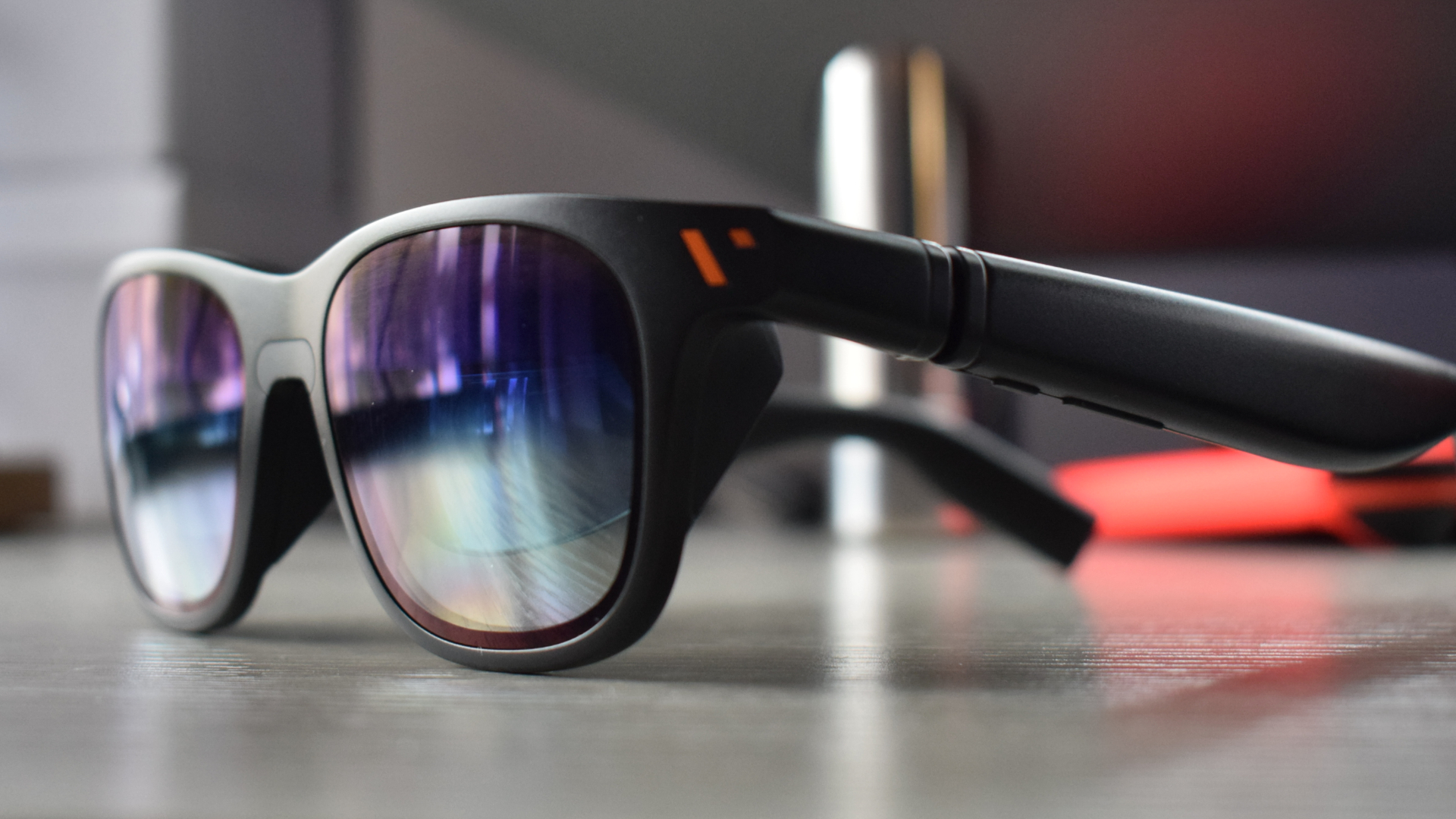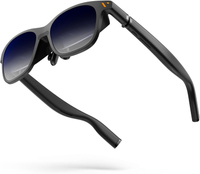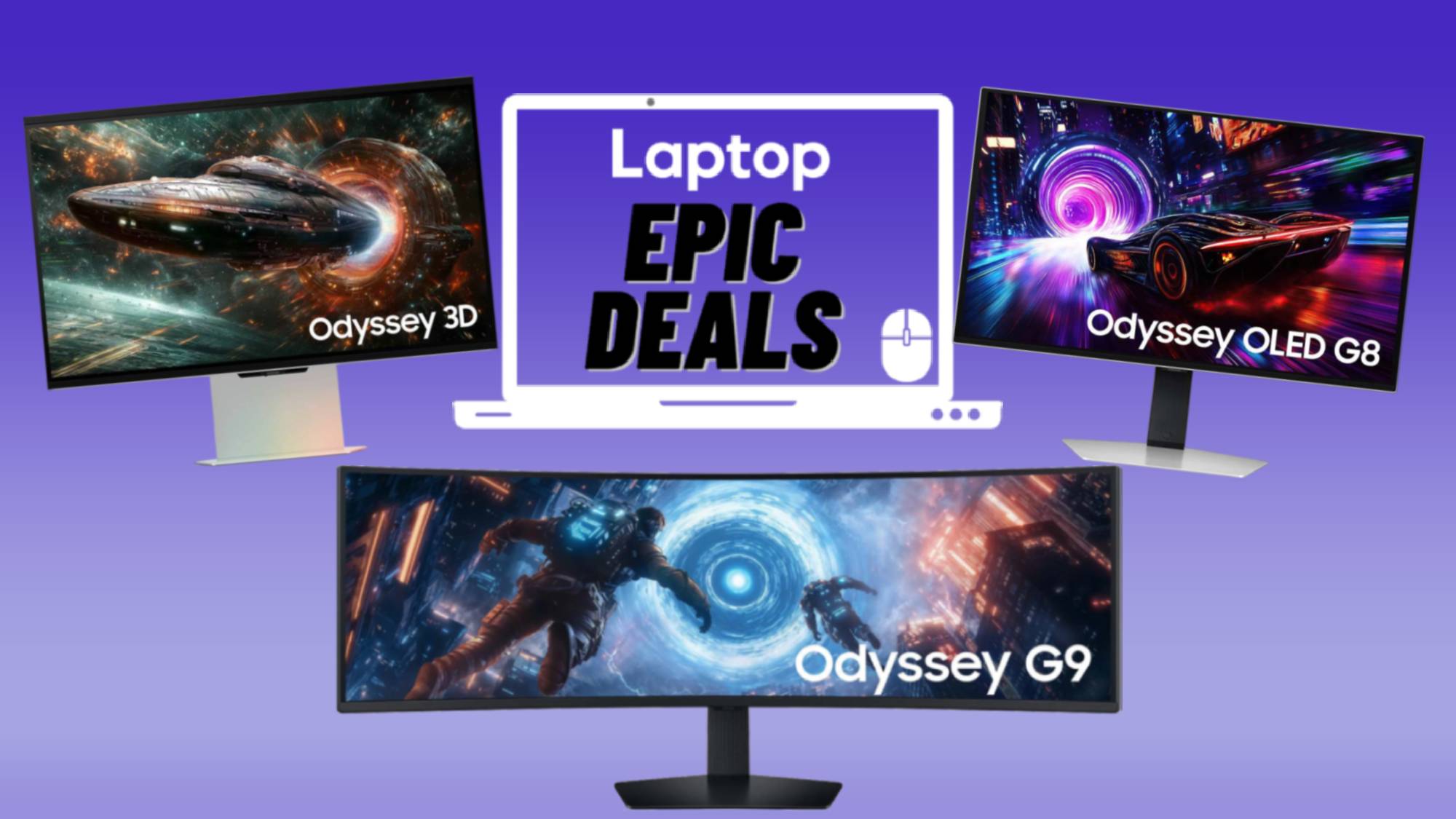These AR glasses brought my guilty pleasure back from the dead, and it's straight-up wizardry
VITURE's Immersive 3D is transforming media on Windows, Mac, and iOS

Some call it nauseating, a cheap gimmick, and even a con. Mission Impossible and the Cornetto trilogy's Simon Pegg once said it's a bit like "seeing someone you respect trying too hard. Like witnessing your dad in leather trousers," and Academy Award-winning director Ang Lee once referred to the medium simply as "purely bad." Then again, what would he know, he made 2003's Hulk.
Of course, I'm talking about 3D in movies, games, and media. Not the shift from pixels to polygons, but the "hand reaching out from the screen with a wink and a nod" kind of 3D — the kind of 3D I unashamedly love. To me, when done right, 3D media can transform screen into stage, and it doesn't bother me one iota that people look at me like I've just confessed to liking Ska music whenever I say so. In fact, as an act of defiance, I'll be quietly skanking my way through the remainder of this article in the background.
Sadly, despite its obvious supremacy, 3D exists only on the fringes of media now, with the ghost-like appendages of the LaserDisc and the Steam Machine reaching out menacingly to pull it into the abyss. 3D settings in games and at-home 3D media have all but shuffled off this mortal coil, sporadically reappearing in public for the occasional movie theatre release, with its last vestiges of life potentially trapped within my 3D Blu-Ray case for Dredd, like a Ghostbusters muon trap. Ironically taking up shelf space as a relic, considering I no longer own the correct TV to make full use of it.
Similarly, the so-called death of smart glasses was called too soon. These AI and AR frames are now clawing their way out of the grave-like tech landfill of HD DVDs, iPods, and about a million E.T. Atari cartridges into the limelight they deserve — and they're dragging the gone-too-soon promise of 3D media with them. Thanks to devices like the VITURE Pro XR glasses and its Immersive 3D software for Windows, Mac, and iOS, 3D is back. It is so back. And, against all odds, having tried it myself, I have to admit, the experience is nothing short of magical.
As VITURE co-founder Emily Wang tells Laptop Mag, "In the past, we were limited by the lack of 3D videos and games, but that's changing now. Immersive 3D is revolutionizing the experience, adding a real-time 3D dimension to almost any 2D content using AI."
Immersive 3D: The comeback tour starts here
In the past, we were limited by the lack of 3D videos and games, but that's changing now. Immersive 3D is revolutionizing the experience, adding a real-time 3D dimension to almost any 2D content using AI.
Emily Wang, VITURE Co-founder
Every product needs a "killer" app or feature, something that shifts gears from "neat" to "need." While AR glasses have plenty of use cases, VITURE's Pro XR glasses may have just found their defining feature in Immersive 3D, a real-time 2D to 3D converter for the company's AR glasses line, powered by AI.
I roll my eyes just as hard as the next person whenever I see "powered by AI," but after connecting the VITURE Pro XR glasses to my laptop and installing the Immersive 3D software, my doubts were sharply silenced. In fact, everything was silenced, as I was a little lost for words.
Stay in the know with Laptop Mag
Get our in-depth reviews, helpful tips, great deals, and the biggest news stories delivered to your inbox.
I'm not saying that VITURE's 2D to 3D tech is magic, but I'm not not saying it either.
Sadly, Emily Wang is. Bursting the arcane suggestion, she revealed the tech-based efforts to develop the Immersive 3D software by telling Laptop Mag, "We've been working hard on our proprietary VITURE AI algorithms that identify depth cues and spatial relationships, making the 3D effect feel natural, especially along edges, while minimizing latency."
Pull up a picture or video from your hard drive and the results are immediately apparent. The borders of windows instantly become portals that peer into 3D worlds, all in real-time, with no lag or delay. Images so accurately pop from the screen that I kept tilting my head, half-expecting to peer behind subjects.
I can't say it's perfect. There are moments when elements appear out of order, or subjects seem too close or far away. However, they're generally few and far between. The process works so well, that while checking out VITURE's recommended playlist of YouTube videos to witness the effect in full, I genuinely had to check the videos on another computer to make sure I wasn't being bamboozled.
At one point, I even disconnected my internet, wondering if there was some sort of cloud computing shenanigans running behind the scenes. But everything just worked. Not in the Bethesda/Todd Howard sense, either. Everything legitimately just worked, and it all ran on-device.
Save $60 on the VITURE Pro XR Glasses when applying coupon at Amazon.
VITURE's XR Glasses have been one of my favorite pairs of AR/XR glasses to review, offering a gigantic, personal 135" holographic display with built-in Harman audio speakers to bring your entertainment to all-new levels.
I gave these glasses four-and-a-half stars in my review last year, and I can't vouch for them enough when it comes to transforming how you enjoy movies and games.
They also work with Windows and Mac computers, meaning you can transform your laptop into an AR experience, one that's comfortable to use and incredibly immersive.
Features: Built-in micro-OLED displays (1920 x 1080, 120Hz) Electrochromic dimming lenses, Harman-tuned speakers.
Immersive 3D: It's intense, and intensive
The fact that Immersive 3D runs on-device is potentially its biggest blessing and most obvious bottleneck. While it's great for reducing lag, it also requires some considerable power to compute the effect in real time.
That's not much of an issue at all when it comes to images and videos, or even your favorite streaming apps. However, gaming is a different story. You're going to need a capable machine to avoid any performance hiccups as the software can use up around 30% of your GPU in operation.
VITURE recommends you use Immersive 3D on systems paired with an Nvidia GeForce RTX 4060 or higher GPU. For gaming, an RTX 4080 is preferred, with the company claiming that you can run Black Myth: Wukong at max settings with a stable 45 FPS — or 60 FPS and above if you dial back ray-tracing and drop the graphics presets from "Cinematic" to "Ultra High."
Of course, it's early days for the software, and efficiency is bound to improve. VITURE is already eyeing optimizations for CPUs with dedicated NPUs (like AMD's Strix Halo and Intel's Arrow Lake processors). As Wang tells Laptop Mag, "It's definitely something we're working on, but it's highly dependent on the GPU of the device."
You have to see it to believe it, and that's the problem
Experiencing 3D is something everyone needs to try to truly understand the magic behind it.
Emily Wang, VITURE Co-founder
Perhaps the most frustrating part of writing this article is that I can't accurately show you just how well Immersive 3D works or how impressive the results are. The struggle is real, and it made me think back to a previous conversation I'd had with VITURE's Emily Wang in June 2024, when talking about the struggles AR glasses face when going mainstream.
"We see the market booming as more and more people are excited about it, but another hurdle we've hit is that people have to see it to believe it," Wang revealed at the time. Sadly, the same is true once again.
Back in the present, Wang re-emphases the impact of VITURE's AR glasses and the free tools like Immersive 3D that capitalize on this tech, telling Laptop Mag, "Experiencing 3D is something everyone needs to try to truly understand the magic behind it. It's kind of like Apple Vision Pro — there are so many incredible moments, but the barrier is so high, so few people get to see it. If we can lower that barrier and make it accessible to everyone, it will truly be magical."
To help lower that barrier, Immersive 3D is free, works with all VITURE AR glasses, and is available for Windows, Mac, and iOS, with Android soon to follow through the company's proprietary app. As Wang tells Laptop Mag, "We're working on bringing this to SpaceWalker Android ... It'll work really well on high-end Android phones."
In the meantime, I can't recommend Immersive 3D enough. If you know someone with a pair of VITURE AR glasses, I implore you to give it a whirl. And, if the concept really sways you, dive in on the AR glasses experience today and reap all of the benefits of the company's catalog of AR glasses in full by checking out their homepage or Amazon web store.
More from Laptop Mag

Rael Hornby, potentially influenced by far too many LucasArts titles at an early age, once thought he’d grow up to be a mighty pirate. However, after several interventions with close friends and family members, you’re now much more likely to see his name attached to the bylines of tech articles. While not maintaining a double life as an aspiring writer by day and indie game dev by night, you’ll find him sat in a corner somewhere muttering to himself about microtransactions or hunting down promising indie games on Twitter.
You must confirm your public display name before commenting
Please logout and then login again, you will then be prompted to enter your display name.


